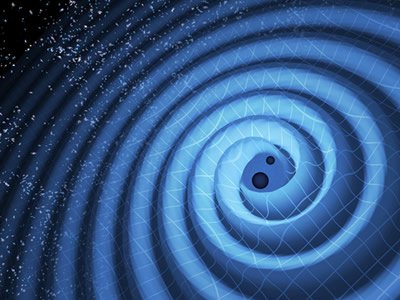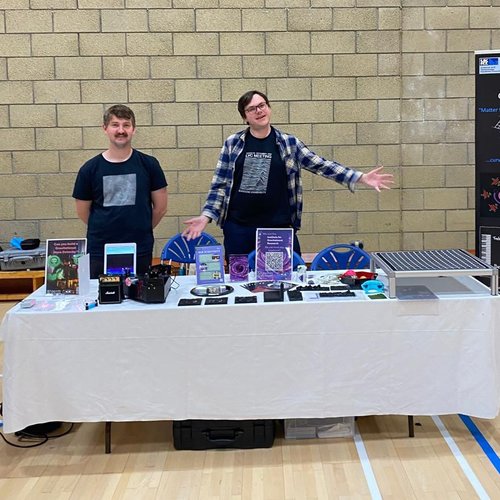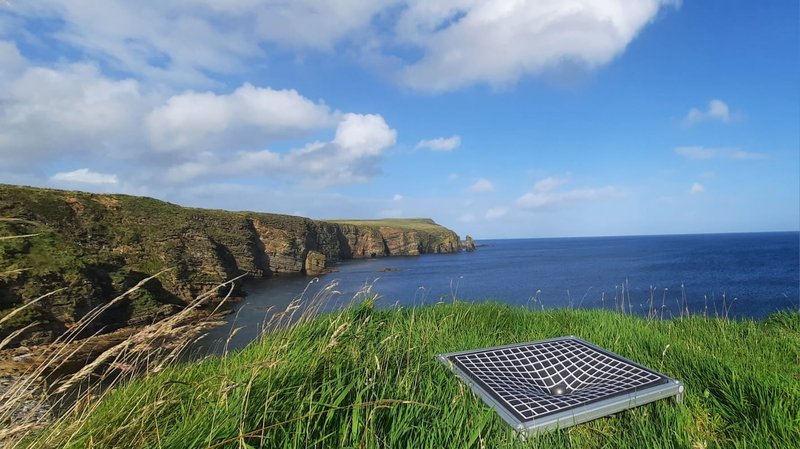
Science festivals offer a platform for researchers to demystify complex scientific phenomena and help the public better understand the relevance and importance of their work. By making science accessible to broader audiences, it can also inspire future scientists to pursue careers in STEM.
Graeme Eddolls, a postdoctoral researcher in Syracuse University’s College of Arts and Sciences (A&S) who works with the Center for Gravitational Wave Astronomy and Astrophysics (CGWAA), recently attended the Orkney International Science Festival in Scotland. The festival regularly draws prominent scientists, historians and experts who share their research with the public in approachable ways. Notably, when it was founded in 1991, it was the world’s second ever science festival, following the renowned Edinburgh Science Festival, which was established in 1989. Eddolls and his collaborators, Andrew Spencer, a lecturer at the University of Glasgow, and Leon Trimble, an audiovisual artist and honorary research associate at the University of Birmingham, presented their "Swimming with Gravitational Waves” project, which includes creative and interactive experiences that connect water, sound and gravitational waves. During the week, they also showcased their "Music of Deep Time" project and hosted booths at an Orkney Festival family event as well as a workshop at Kirkwall Grammar School.

About the Project
To a general audience, the concept of gravitational waves may seem complex and challenging to understand. However, as Eddolls explains, gravitational waves follow similar physics principles as those we observe in everyday phenomena like light, water and sound waves.
Gravitational waves are produced in the aftermath of some of the most energetic processes in the universe, like when black holes or neutron stars collide. These events produce ‘ripples’ in spacetime, a concept which was first predicted by Albert Einstein in his general theory of relativity. By the time these signals reach Earth, they are extremely faint. To detect them, researchers measure laser interference using detectors known as laser interferometers.
When a gravitational wave passes through a detector, it alters the distance that laser light travels along the detector’s two arms, changing their interference pattern. This technology, used by some of the most advanced detectors like the Laser Interferometer Gravitational Wave Observatory (LIGO) in the U.S., helped scientists make the first direct observation of gravitational waves in 2015, a monumental discovery made by an international team of physicists, including several researchers from Syracuse.
Eddolls points out that a fascinating aspect of gravitational waves is that their vibration frequencies fall within the range of human hearing.
“While we can't directly hear gravitational waves with our ears, we can take the signal from our detectors and turn it into sound,” he says. “You can actually listen to the converted signal of the first ever gravitational wave detection.”
Their "Swimming with Gravitational Waves" event combines hearing, sight and sound to immerse participants in the omnipresent nature of gravitational waves in the universe. The team employs a small laser interferometer activated by a vibrating mechanism to alter the interference pattern of a laser beam. This generates an electrical signal that audiovisual artist Leon Trimble uses to create music with a modular synthesizer.

Participants enter a swimming pool, where they can hear sound waves through speakers positioned above and below the water. This setup creates a unique auditory experience, mimicking how gravitational waves are produced everywhere in the universe. Furthermore, by swimming in the pool, participants can experience water waves through sight which gives the audience a good physical intuition of what waves are, how waves move and how waves interfere when they pass through each other.
A Scotland-Syracuse Connection
Presenting at the prestigious Orkney International Science Festival was a homecoming for Eddolls, who is a native of Scotland. Before coming to Syracuse University in January 2024, he was a postdoc at the University of Glasgow. He also received a bachelor’s degree in physics (2014) and a Ph.D. in experimental gravitational wave astrophysics (2022) from there as well.

The team brought their rubber spacetime demonstrator to the cliffs of Orkney to capture a scenic photo during the festival.
“It was particularly meaningful for me to be able to return home and give something back in sharing the exciting, cutting-edge research that I get to conduct here at Syracuse University,” says Eddolls, who also delivered a workshop with his collaborators, Andrew Spencer and Leon Trimble, for students from Kirkwall Grammar School during the festival. “Not only does humanizing scientists help better shape the public's perception of science, but it allows people to see themselves as potential future members of the scientific community, which I hope encourages people of all backgrounds to consider a career in STEM.”
At Syracuse, Eddolls is currently working on Advanced LIGO, an upgraded version of the initial LIGO detector that made the 2015 gravitational wave discovery. Eddolls and other members of CGWAA are designing hardware aimed at minimizing sources of noise in Advanced LIGO’s detectors, helping to optimize sensitivity. He is also working on a non-gravitational wave project centered around nuclear fusion, where he and other Syracuse physicists are working on controlling and generating very powerful lasers and applying this to nuclear fusion to help provide a step-change towards the goal of achieving sustained nuclear fusion, potentially supplying the world with limitless energy.
